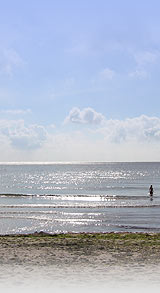Normally the concentration of ordtak
Antall ordtak er 2097836
varav 2119051 på nordiska
Ordtak (2097836 st) Søk
Kategorier (3944 st) Søk
Forfattere (201310 st) Søk
Bilder (4592 st)
Født (10498 st)
Døde (3319 st)
Datoer (9520 st)
Land (27221 st)
Idiom (4439 st)
Lengde
Topplistor (6 st)
Ordspråksmusik (20 st)
Statistik
Denna sidan visar ordspråk som liknar "Normally, the concentration of carbon dioxide in the air is very low, well below one percent. The levels seen in the ground and snow within tree kill areas are much higher, up to 99 percent, and very dangerous.".
Linkene lenger ned har ikke blitt oversatt till norsk. Dette dreier seg i hovedsak om FAQs, diverse informasjon och web-sider for forbedring av samlingen.
Barnslighet är både skattebefriat och gratis!
Vad är ordtak?
Hur funkar det?
Vanliga frågor
Om samlingen
Ordspråkshjältar
Hjälp till!
Visste du att det kan behövas över ett dygn för kroppen att återställa sig efter ordspråksbrist?
www.livet.se/ordtak
varav 2119051 på nordiska
Ordtak (2097836 st) Søk
Kategorier (3944 st) Søk
Forfattere (201310 st) Søk
Bilder (4592 st)
Født (10498 st)
Døde (3319 st)
Datoer (9520 st)
Land (27221 st)
Idiom (4439 st)
Lengde
Topplistor (6 st)
Ordspråksmusik (20 st)
Statistik
Denna sidan visar ordspråk som liknar "Normally, the concentration of carbon dioxide in the air is very low, well below one percent. The levels seen in the ground and snow within tree kill areas are much higher, up to 99 percent, and very dangerous.".
Linkene lenger ned har ikke blitt oversatt till norsk. Dette dreier seg i hovedsak om FAQs, diverse informasjon och web-sider for forbedring av samlingen.
Barnslighet är både skattebefriat och gratis!
Vad är ordtak?
Hur funkar det?
Vanliga frågor
Om samlingen
Ordspråkshjältar
Hjälp till!
 |
Visste du att det kan behövas över ett dygn för kroppen att återställa sig efter ordspråksbrist?
www.livet.se/ordtak
Linkene lenger ned har ikke blitt oversatt till norsk. Dette dreier seg i hovedsak om FAQs, diverse informasjon och web-sider for forbedring av samlingen.
Barnslighet är både skattebefriat och gratis!
Vad är ordtak?
Hur funkar det?
Vanliga frågor
Om samlingen
Ordspråkshjältar
Hjälp till!
 |
Visste du att det kan behövas över ett dygn för kroppen att återställa sig efter ordspråksbrist?
www.livet.se/ordtak
